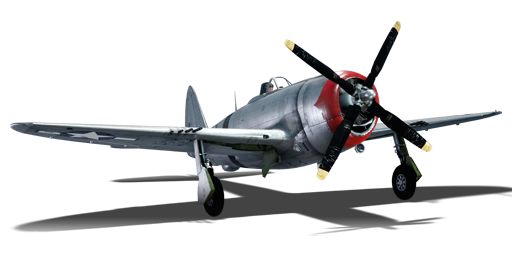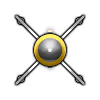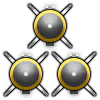



The P-47D-28 is an American fighter. It was introduced in Update 1.33.
The Thunderbolt was originally designed for high altitude bomber escort role, but due to limited range, it was not very successful in the European theatre of operations where it couldn't escort the bombers all the way to their target. The newer P-51B/C and later P-51D fitted with a Merlin engine turned out to be a much better long range, high altitude escort fighter, and the P-47 was relegated to other duties. Due to the Thunderbolt's large size and strong construction, the aircraft was well suited for carrying large amounts of air-to-ground ordnance and was often used in ground attack role against small targets that level bombers could not reliably hit, such as bridges.
In War Thunder, much like in real life, all Thunderbolt variants have tremendous potential as a high altitude fighter, but can also be used very effectively as ground attack aircraft, thanks to their impressive payload capacity. When fighting against enemy aircraft, boom and zoom tactics are a must, never try to dogfight with the Jug. When diving on a target, if you don't secure the kill, don't try to turn and finish him, use the speed you built in the dive and climb up, circle around and do it all again. Don't be afraid to go head-on; you have a radial engine and 8 x .50 calibre machine guns.
Except for having a different propeller, and 70" HG of boost, there are very few differences between the P-47D-25 and D-28. The D-25 uses a Hamilton Standard Hydromatic 13 ft. 7/8 in. diameter propeller, while the D-28 uses a Curtiss Electric "sleeved" propeller with 13 ft diameter. Despite a popular misconception that the D-28 uses a "paddle-blade" propeller whereas the D-25 doesn't, both were in fact called "paddle-blade" propellers and offered virtually identical performance. The origin of this misconception is that the early Thunderbolt variants used a smaller Curtiss Electric propeller with only 12 ft. 2 in. diameter, which proved insufficient for the R-2800 engine's power output. Larger propellers were needed to transform more engine power into thrust, giving the Thunderbolt a boost in climb rate and acceleration. These propellers were used starting from the Thunderbolt D-series manufacturing block 22 (P-47D-22) and the main distinction between these propellers was simply that aircraft manufactured on Republic's Evansville plant received the new Curtiss Electric propellers, while the Long Island manufacturing facility used Hamilton Standard propellers.
Compared to the D-25, the D-28 variant offers the M10 Bazookas as an additional armament option, although it's better to use the HVAR rockets as it is far more destructive than the bazookas.
flaps
flaps
flaps
brake
| Belt | Belt filling | Armor penetration (mm) at a distance: | |||||
|---|---|---|---|---|---|---|---|
| 10 m | 100 m | 500 m | 1000 m | 1500 m | 2000 m | ||
| API-T/AP/AP/I | 30 | 27 | 20 | 13 | 9 | 6 | |
| AP-I/AP-I/API-T/I/I | 28 | 26 | 18 | 11 | 7 | 4 | |
| API-T/I/AP/AP/AP-I/AP-I | 30 | 27 | 20 | 13 | 9 | 6 | |
| API-T | 28 | 26 | 18 | 11 | 7 | 4 | |
| AP-I/I/AP-I/I | 28 | 26 | 18 | 11 | 7 | 4 | |
| Name | Weight | Slot | ||||||||||||
|---|---|---|---|---|---|---|---|---|---|---|---|---|---|---|
| 62.8 kg |  |  |  |  |  |  |  |  |  |  | ||||
| 117.9 kg |  |  |  | |||||||||||
| 242.6 kg |  |  |  | |||||||||||
| 500.8 kg |  |  | ||||||||||||
| 3 × | 51.8 kg |  |  | |||||||||||












Flight performance | |
|---|---|
Survivability |
|---|
Weaponry | ||
|---|---|---|